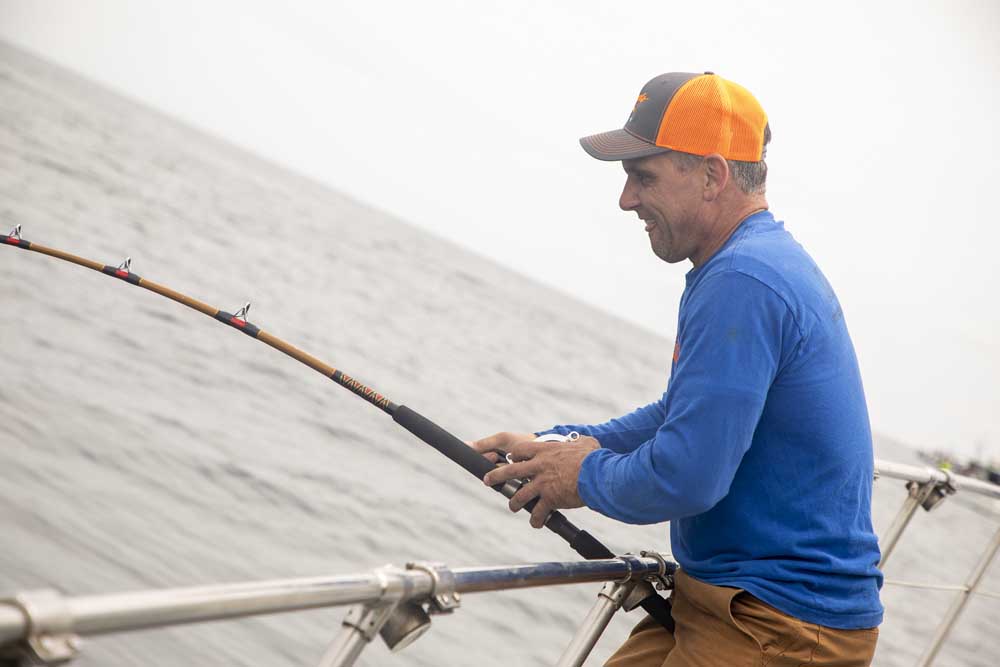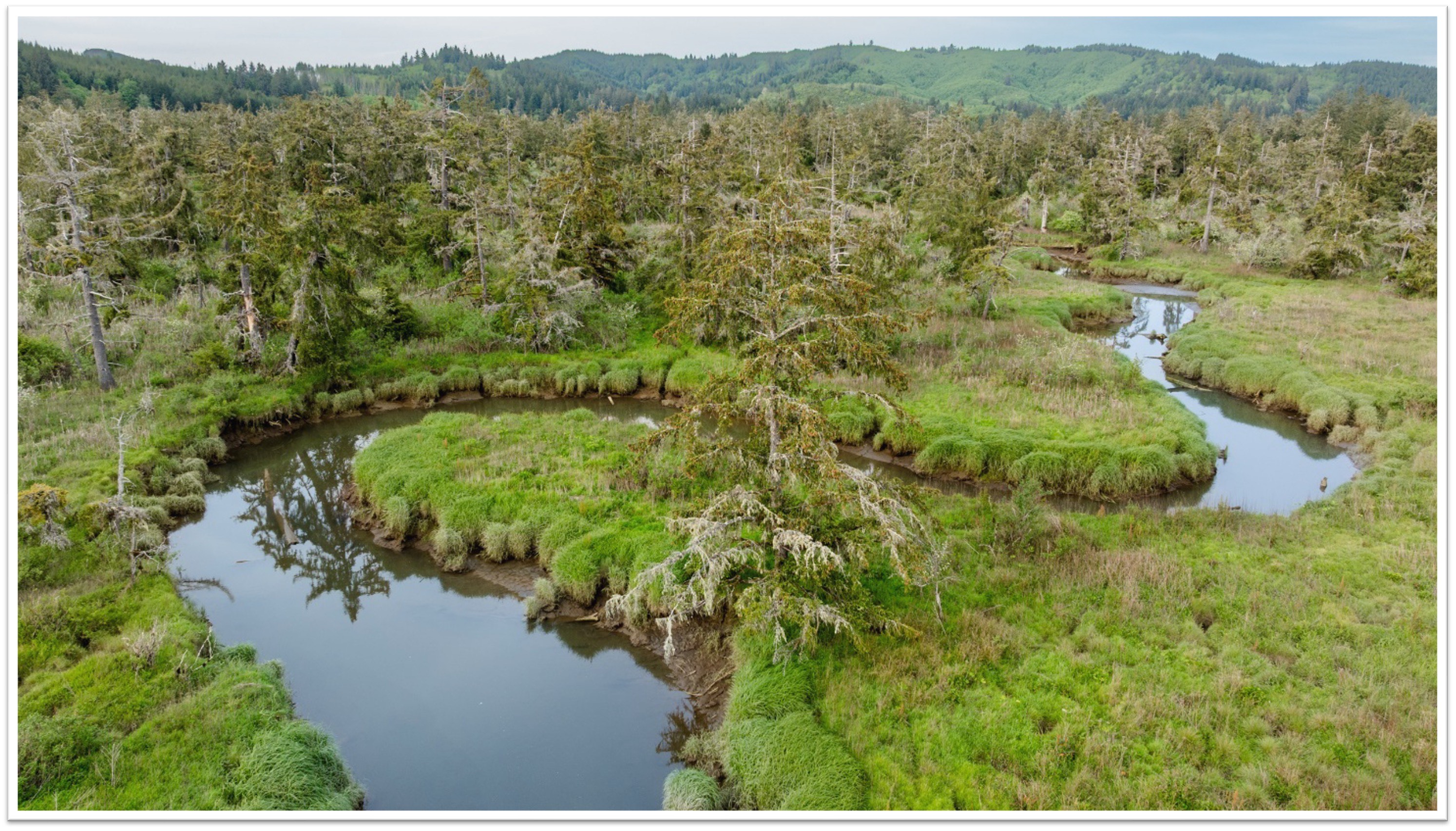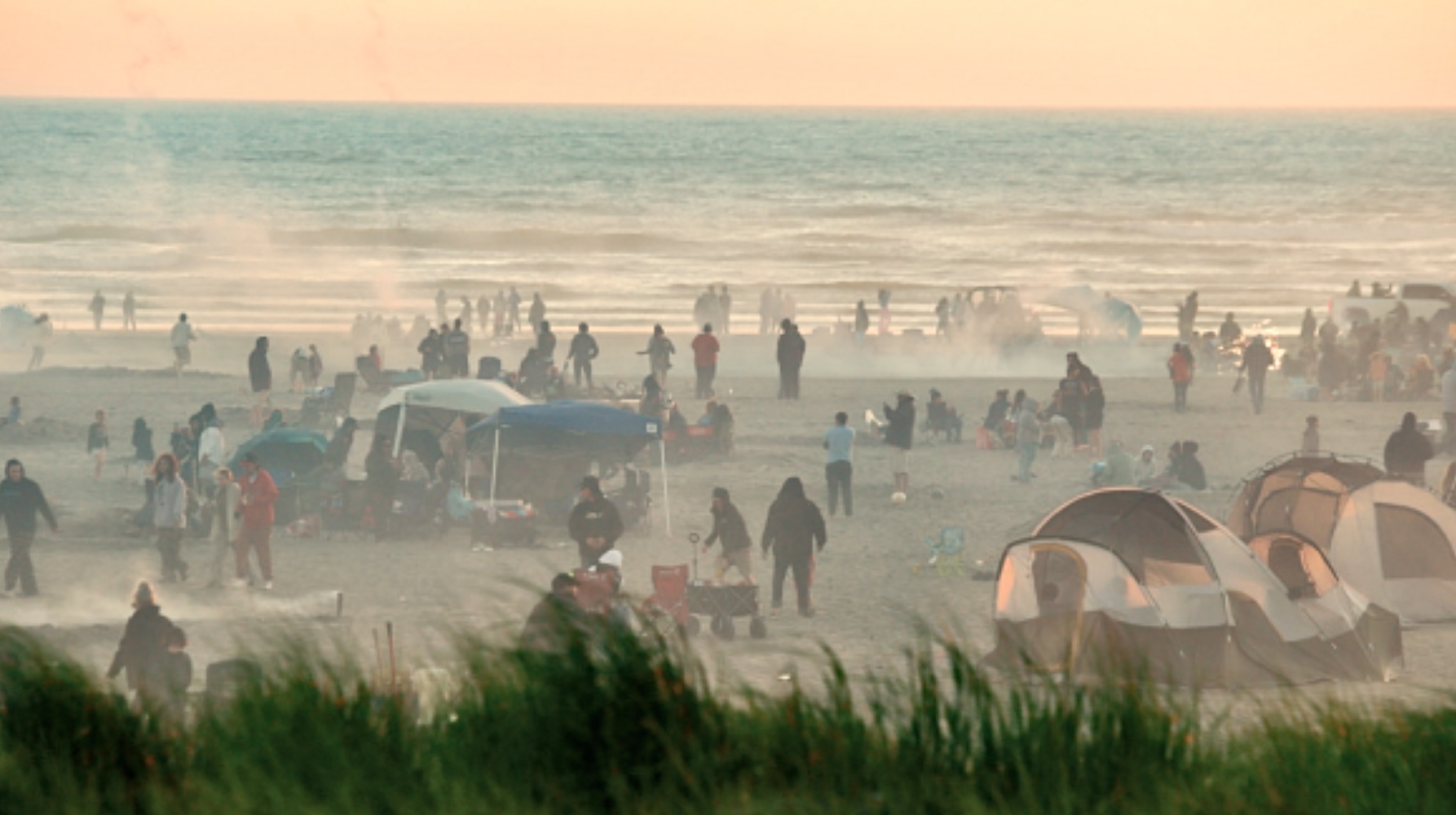Holy halibut: Local charters relish bottom fish bonanza
Published 12:24 pm Monday, May 23, 2022

- A customer battles a halibut aboard the F/V Sea Breeze on Sunday, May 22 off the Washington coast.
ILWACO — Fishing roughly 20 miles off the Washington coast near a vast submarine canyon, it took the bait more than two minutes to reach the bottom in an ink-black abyss.
It’s in this deep-water habitat, near the rim of the Astoria Canyon, where one of the most prized fishes in the Pacific Northwest lurks. Pacific halibut eat their fill in this nutrient-rich environment, where a gradually sloping Washington seafloor drops precipitously from a few hundred feet into a dizzying depth thousands of feet below. Even the best sonars struggle to discern details. It’s here that vessels from Ilwaco, Astoria, Warrenton and Westport gather in hopes of hooking a big, delicious catch.
Heavy-duty halibut fishingOn May 22, F/V Sea Breeze skipper Tyler Pearson gave the signal and six recreational halibut charter fishermen let their baits free fall into the 1,000-foot waters.
Pacific halibut
Weight: Up to 500 pounds
Length: Up to 8 feet
Lifespan: Up to 55 years
Region: Alaska, West Coast
The Pacific halibut is the largest species of flatfish, according to NOAA. It is native to the North Pacific Ocean and it is fished by commercial, recreational, and subsistence fishermen. Huge Pacific halibut, sometimes called “barn doors”, can attain a length of more than eight feet and a width of over five feet. Halibut are born swimming like salmon, with eyes on either side of their head. As they grow (by the time they are six months old), one eye migrates to the right side and the young halibut begin swimming sideways, with both eyes on the top of their bodies. Their large size and delectable meat make them a popular and prized target for both sport and commercial fishermen.
U.S. wild-caught Pacific halibut is a smart seafood choice because it is sustainably managed and responsibly harvested under U.S. regulations.
Since 1923, the United States and Canada have coordinated Pacific halibut management through a bilateral commission known as the International Pacific Halibut Commission (IPHC). NOAA Fisheries and the North Pacific and Pacific Fishery Management Councils are responsible for allocating allowable catch among harvesters in the U.S. fisheries.
Oregon, Washington, and California have catch limits for sport Pacific halibut fishing. The demand for Pacific halibut sport fishing is so high that closed seasons, bag limits, and possession limits are all used to control the recreational fishery and extend the season as long as possible.
The charter fishery has more restrictive regulations to keep its harvest within the levels set by managers, including a permit system that limits the number of charter boats that can fish for Pacific halibut.
Fishing at such significant depths, between 500 to 1,000 feet, requires a significantly sturdy rod, and heavy tackle, including a weight between three and five pounds. In comparison, most bottom fishing — for lingcod and rockfish, for instance — requires sinkers of eight ounces or less.
The baits used for halibut are also super-sized, typically sandwiched and bound together using heavy monofilament line. On Sunday, aboard the F/V Sea Breeze, deckhand Cole Stillman and vessel co-owner Brian Alexander worked diligently to prepare attractive offerings to entice the colossal flat fish. Baits included fresh Chinook salmon belly, mackerel fillet and strips of squid — all slathered in special halibut-scent concoction called ‘Butt Juice.’ At several hundred feet below the surface, in a pitch-black world, a smelly and oily bait is essential.
Avoiding the arrowtooth
The first drift above the canyon netted a few black cod, or sablefish, a species commonly caught while fishing depths of more than 700 feet. The next few drifts brought in a couple mackerel, one skate and — with much excitement — the first of four halibut of the day. A common bycatch while halibut fishing is the dreaded arrowtooth, a type of flounder with sharp teeth that resemble halibut but lack the coveted firm, white flesh.
Regardless of the species, bringing the big flat fish from deep water is akin to hoisting a kite-shaped anvil. It requires great effort, with fishermen working in tandem and trading off when tiring to help tackle the task.
By early afternoon, each of the fishermen aboard the F/V Sea Breeze had caught their allotted one halibut, with a few black cod mixed in.
The biggest hinderance to bottom fishing this season has been the weather, charter captains report. Occasional rough conditions have kept boats in port a majority of the permitted halibut fishing days. However, on May 22 ideal weather and water conditions allowed several boats in the local charter fleet — including Coho, Sea Breeze and Pacific Salmon Charters — to make the roughly 20-mile venture offshore, where they all had fantastic results. Nearly every boat in the Ilwaco fleet limited out on halibut.
“Now that we’re past the early part of the season with challenging weather, the forecast looks very bright for the halibut season,” summarized Sea Breeze Charters owner Steve Sohlstrom.
Local halibut quota
The Washington recreational all-depth halibut fishery began May 5 and continued through May 22, two days per week, on Thursday and Sunday. The fishery will resume for Memorial Day weekend on Thursday, May 26, then June 2 through June 26. It will stay open two days per week, Thursday and Sunday and Thursday, June 30, assuming the local quota remains unfilled.
The 2022 recreational halibut season includes a 19,037 pound quota for the Columbia River region (Marine Area 1). As of May 15, 17,520 pounds or 92% of the allotted quota remained.





